Mexico City Tourism Information
.jpg)
Mexico City is not only one of the world's biggest cities, but it is a sprawling, untidy modern metropolis with ancient Aztec undertones. People are attracted to the city by its inexpensive restaurants, wild and varied nightlife, dozens of wonderful museums and colourful craft markets. Anyone who enjoys a fast-paced urban city playground will enjoy Mexico CIty, but some travellers may find the polluted metropolis a bit overwhelming.
Mexico City is ideal to organise day trips to other nearby towns and attractions. Like the ancient city of Teotihuacán and the numerous charming colonial towns within easy reach. While some travellers visit the city as a transit point on a resort holiday, it is so vast and has so many worthwhile attractions that it is impossible to cover everything in a single holiday, let alone a single weekend!
Mexico City has a subtropical highland climate, with warm summers and mild winters. Seasonal variations in temperature are small, but May is the warmest month of the year, and January the coldest, when night frosts are possible. The average maximum temperatures of late spring and summer May reach up to 33°C, and the average low winter temperatures reach 7°C.
Mexico City has a high average annual rainfall, with the wettest month being July, and the driest month February. Even during the summer rainy season, travellers are likely to get plenty of sunshine between showers.
Mexico City suffers from terrible air pollution and the city is often smoggy, with poor visibility. This air pollution is at its worst during winter. The city is a year-round travel destination, but the best time to visit Mexico City is in the spring months of March to April and from October to December.
Getting around Mexico City by public transportation is easy and cost effective. However, the Metro is not, as a rule, frequented by many upper classes in Mexico (it’s a cultural thing). Visitors, using the public transport, should always pay attention to their surroundings and protect possessions. Be careful specially, during peak hours, which can get extremely busy (6:30 a.m. to 10:00 a.m. and 4:30 p.m. to 8:00 p.m) when pickpockets may seize the opportunity. Caution is advised the rest of the time.
Mexico City has three Metro Systems; two are rail-based, and one is a bus. The bus lines can be identified with the symbol "mb", while the rail based operate mostly underground. Getting from the airport to the centre, can be done by metro or metrobus for 5 pesos. Line 5 of the metro or line 4 of the metrobus operate from terminal 1 to the city centre. It only costs 5 Pesos. Alternatively, getting a taxi or Uber to the city can cost 120 to 250 pesos. This option is more recommended when arriving after sunset or at peak times.
When using the public transport, you can use single paper tickets on the metro (underground) or an electronic card. However, for the metrobus (bus lines) you will need an e-card to access the lines, costing 6 Pesos per ride. Note that the metro and the metrobus are not linked, so you will need to buy 2 separate tickets for each mode of transport if transferring. There are also multiple bus lines and trolleybuses which operate throughout the city. Not all have identified numbers, but rather the names of the places they pass. You can pay onboard the busses and ask to make sure before you board they go to the desired destination.
✔️Tip: When taking the metrobus, not all machines sell single tickets. If you are not able to buy the card, then ask a local to help you, by giving them 6 pesos and they will load their card so you can access the bus line.
Below you can find the metro and the metrobus map for Mexico city available to download:
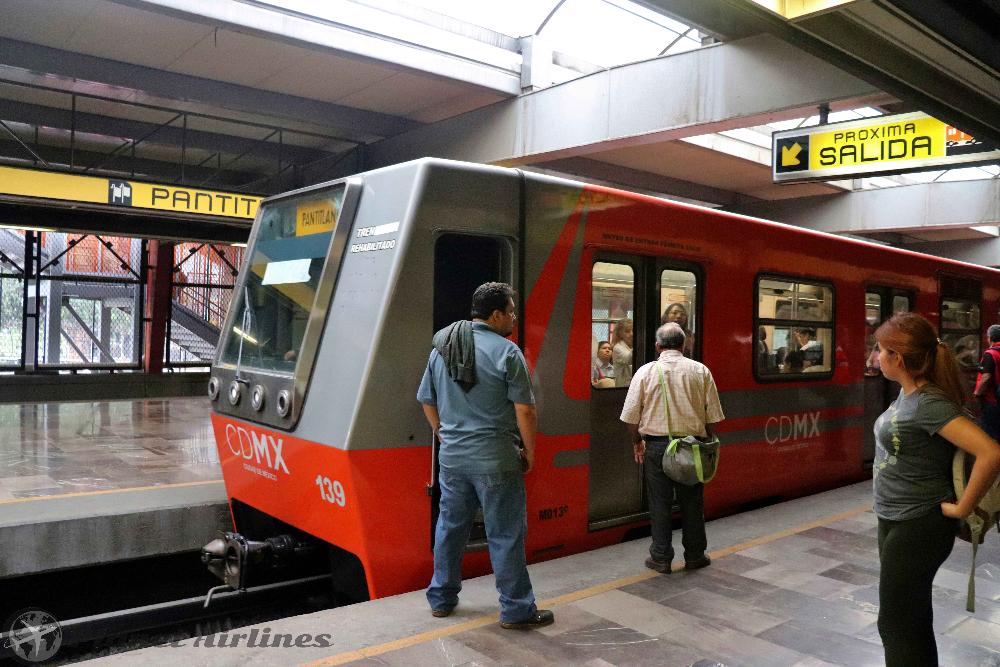


Many visitors relate Mexico, just with the beautiful resorts, beaches and food, that are very popular around the world. But you can underestimate the power of the country's biggest city. Worth coming to visit and explore in its own right. The culturally colourful and historically fascinating city has plenty to see and do for visitors from all walks of life. Mexico City is also reputed to be the city with the most museums in the world and is sure to appeal to history buffs and art lovers.
With ancient ruins also located very close by in the city centre, tourists will want to visit the Templo Mayor, located within the downtown city. The temple was the principal building of the Aztecs and part of Tenochtitlán, as well as the UNESCO World Heritage Site of Teotihuacan, the site of Mexico's largest ancient city, which dates back to around 300 to 600 BC. For a more colonial flavour, visit the beautiful nearby town of Guanajuato, discovered by the Spanish in 1558 for its silver deposits.
Below you will find more detailed information of the highlights to do and see during your trip in Mexico City:
- Downtown Mexico City is a great place to soak up the architecture and atmosphere of the stately buildings. The Zócalo is the main gathering point in the city and is surrounded by historic buildings. Nearby is the Plaza Garibaldi-Mariachi is surrounded by cafés and restaurants and is also a favourite spot for tourists, during the evening. Around the downtown you will be able to see the Presidential Palace, the Metropolitan Cathedral, Templo Major (ancient old ruins museum), Santo Domingo Square with local food stands and restaurants, the pedestrian street of Av Francisco I. Madero, Palacio de Bellas Artes (Art's Palace) amongst others. Get to the centre by metro, line 2 to Zocalo station.
✔️Tip: You can explore Mexico Downtown by joining one of the many free walking tours around the city. They start at 11.00am and 14.30pm at the entrance of the Metropolitan Cathedral in Zocalo Square. Know the history, interesting curiosities and culture of the Mexico City by a local guide. More information at Estacionmexico.com.mx
.jpg)
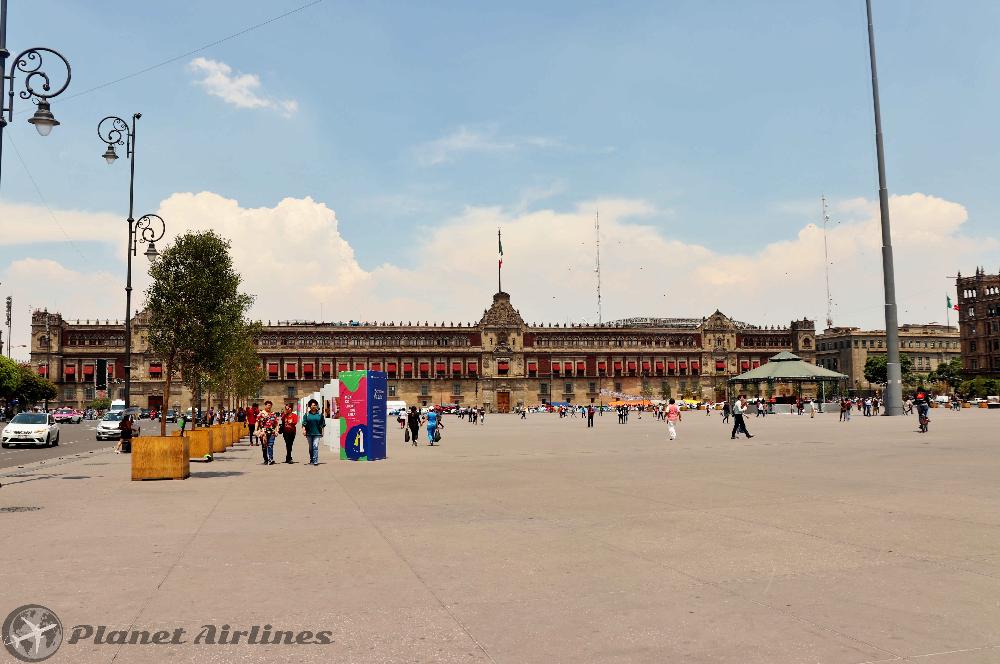

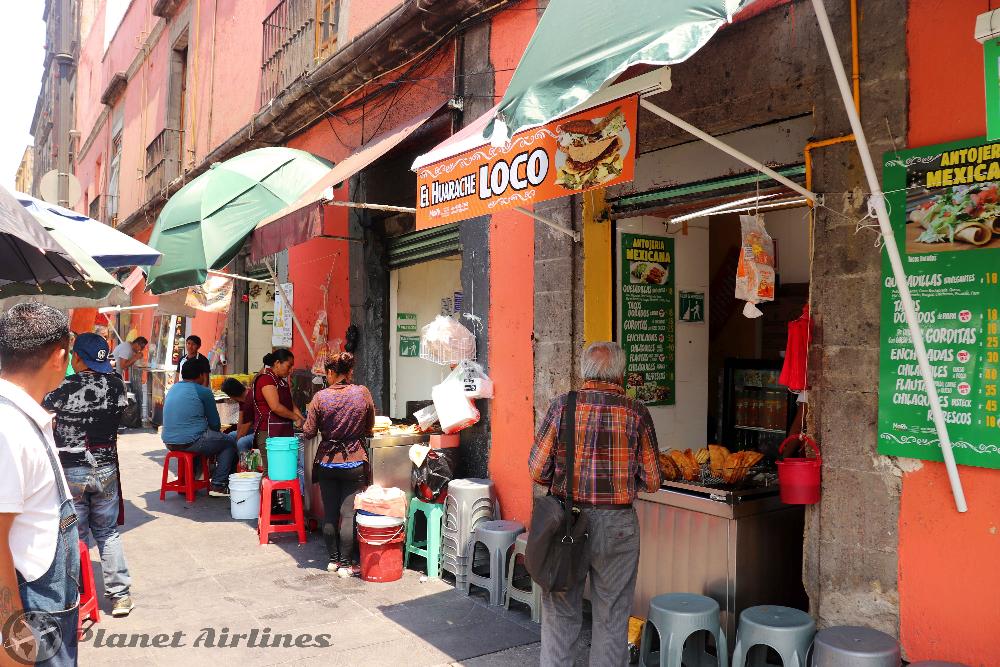
- Templo Mayor: meaning "Great Temple" was the principal temple of the Aztecs, believed to mark the centre of the universe. It was part of the sacred complex of the ancient city of Tenochtitlan, and today it has been excavated to show the multiple layers of construction. The temple was first built in 1375, and enlarged several times, each rebuilding accompanied by a frenzied bloody sacrifice of captured warriors to rededicate the sacred area. Within the site is the excellent Museo del Templo Mayor, displaying artifacts from the original site including a great wheel-like stone carving of the Aztec goddess of the moon, Coyolxauhqui. The entrance fee covers admission to both the museum and the archaeological site. Admission is 75 Pesos. To get there , take metro line 1 to Zocalo. Templo Mayor is off Zocalo, to the right of the city facing the cathedral.
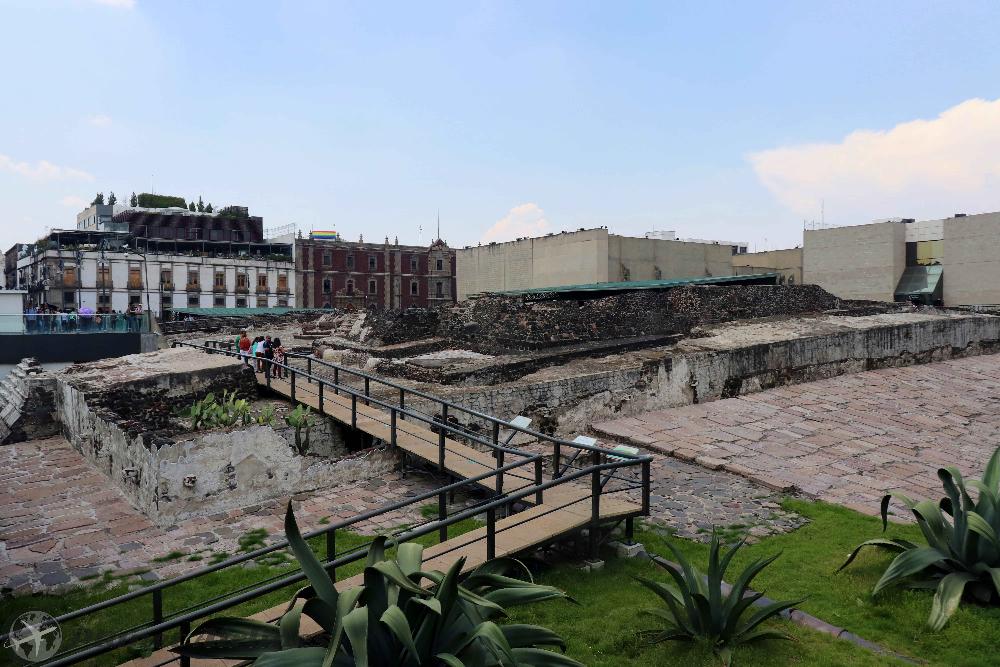

- Bosque de Chapultepec: is Mexico's largest park and natural open space, a truly immense urban park. The park spans over 686 hectares, home to boating lakes, monuments, a zoo, playing fields, and Chapultepec Castle. The castle stands on a hill in the centre of the park, housing the Natural History Museum and offering incredible views of the city. There's plenty to see and do in the park, but most people come to relax on lunch breaks or weekends. To get there, take metro line 1 to Bosque de Chapultepec.



- Zona Rosa: is Mexico City's major dining, nightlife and shopping district. It is a compact area crammed with bars, shops, boutiques, restaurants and hotels. The district has subtly shifted in its appeal recently. 🌈Once a fashionable hub for youth and the upper classes, the Zona Rosa is now also frequented by the city's gay community and tourists. The symbol of Mexico City, a gilded statue of Winged Victory which is the Independence Monument, looms above the district and is one of the city's most photographic features. Note that although accommodation is widely available in the area, it can be noisy at night. To get there, take line 1 on the metro to Insurgentes Station or Metrobus line 1 also.



- San Angel: Formerly a separate village, now is one of the more charming areas of Mexico's suburbs, an exclusive neighbourhood with ancient mansions and colonial houses along cobbled streets. It is famed for its Saturday craft market in the pretty Plaza San Jacinto, which brings colour, crowds and a festive atmosphere to the area, and has excellent art and handicrafts for sale. The suburb is crammed with little restaurants and cafes, several museums exhibiting the works of Frida Kahlo among others, and the lovely El Carmen complex consisting of a triple-domed church, a former monastery, school buildings, and a museum.
San Angel is surrounded by a volcanic rock bed called El Pedregal. Parts of this unusual landscape have been declared protected areas where visitors can see the endemic flora and fauna. To get there take line 1 of metrobus (MB) to La Bombilla stop.
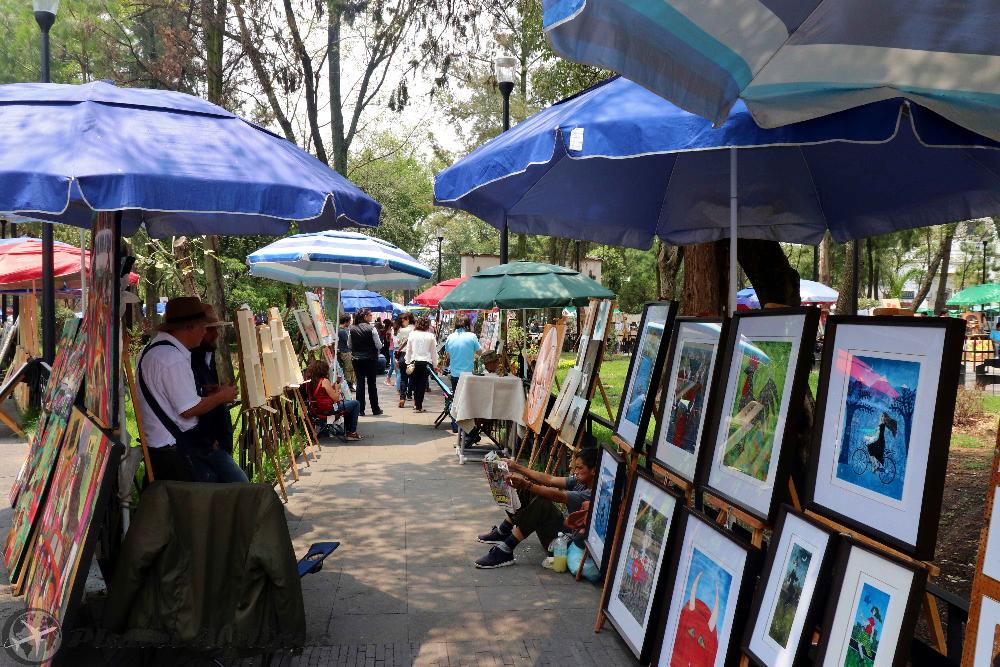


- Torre Latinoamericana: The Torre Latinoamericana is one of the most important and recognizable landmarks in Mexico City. It was once the tallest building in town, until 1984, but still stands proudly as the biggest landmark in the central downtown core. Tourists can go to the top of the nearly 180 meters tower and get an unprecedented view of the city. A good time to go is just before sunset so you can take in the city during daylight, catch a (hopefully) beautiful sunset, and then take in the lights of the city at night. Entrance fee is 80 pesos. To get there take the metro to Bellas Artes station, line 2 or 8.
✔️Tip: Instead of paying the entrance fee of 120 pesos to go to the official observation deck, you can also go to the classy restaurant or bar. The elevator to the bar is free.The bar is only a level below the observation deck. Though it's expensive, it's a nice experience to sit admiring the views and having a drink for a very similar price. (Note a consumption is essential in order to stay at the bar or restaurant)

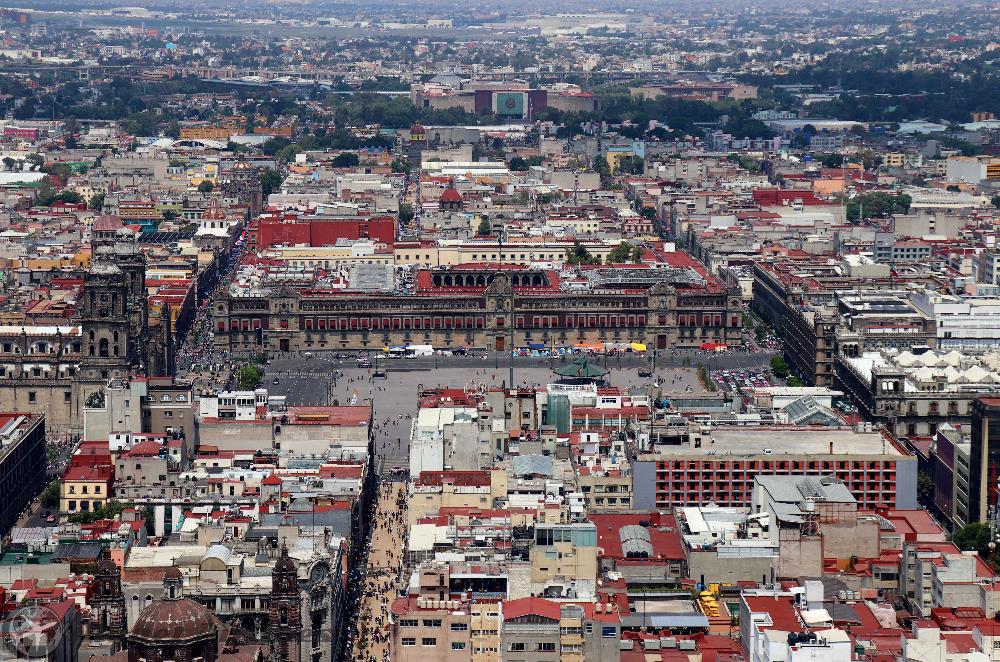

- Coyoacán: Once was a small town, the area was home the first settlements of the Spanish back in the colonial times, essentially the foundations of what is today, Mexico City. Today, it is one of the 16 delegations of the Federal District, located 10 km south of the Zócalo (Main Square). The historical centre of Coyoacán is a fundamental piece of Mexico City, considered to be one of the intellectual and bohemian corners of the capital. When you reach the centre of Coyoacán you’ll find markets, churches, restaurants, theatres and quaint streets to walk around. The area is well known, by being the residence of the famous artist Frida Kahlo. You will find her museum/house nearby, which costs 246 pesos. Its advised to buy online as the queues to get it are very long, specially Summer time, weekends and public holidays. Check Frida Museum for tickets.
Also in the area, you can find the museums of Anahuacalli, of León Trotsky, the National Museum of Interventions, the Watercolor Museum, the Automobile museum, among others. To get there, take the metro line 3 to Coyoacán station.
✔️Tip: Across the San Juan Bautista church, you can find a little tram, it costs 60 pesos for a 40 min round trip tour. It will take you around Coyoacán with a guide that will explain you a little history about this place.

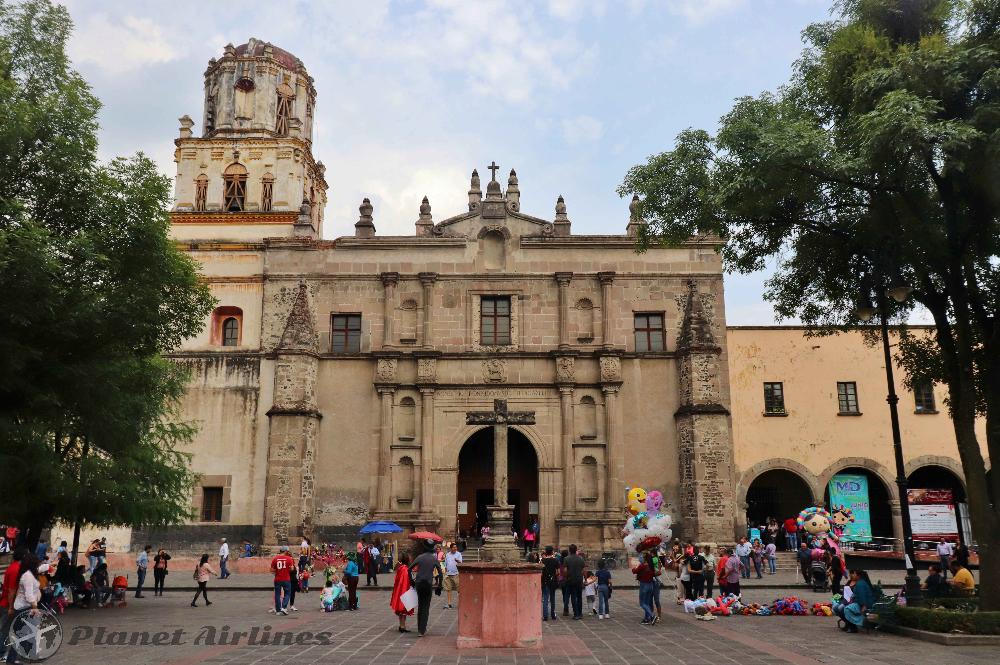
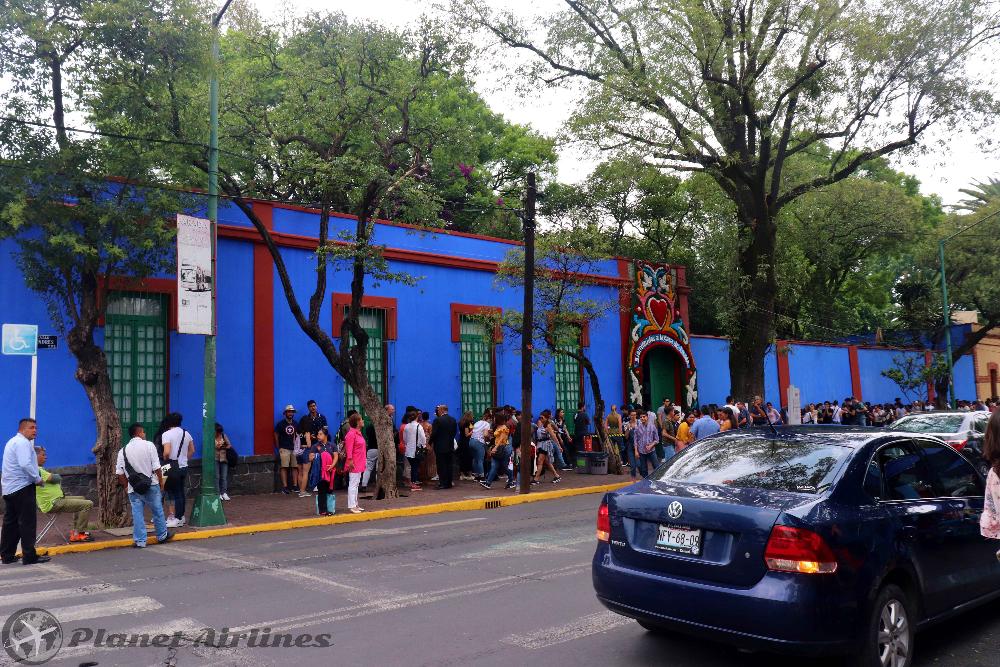

- Plaza de las 3 culturas: It's the square of the 3 cultures, so named because it symbolizes the fusion of pre-Hispanic and Spanish roots into the Mexican mestizo (mixed blood) identity, this plaza displays the architectural legacy of three cultural facets: the Aztec pyramids of Tlatelolco, the 17th-century Spanish Templo de Santiago and the modern tower that houses the Centro Cultural Universitario. The area is open to visit and is free of charge until 18.00 every day. To get there take metro line 3 to Tlatelolco. To get there take metro line 3 to Tlatelolco.
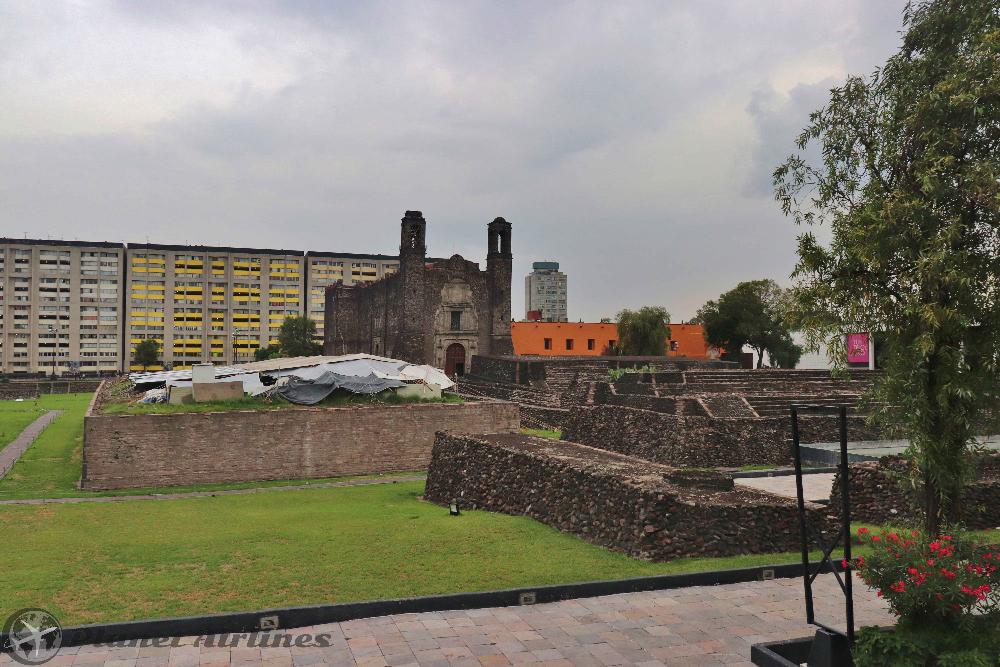

If you are staying in Mexico City for a few days, it's an excellent opportunity to visit towns, Aztec ruins and colonial villages which add to the rich history of Mexico and its heritage.
Below are some places worth exploring:
- Teotihuacán: Situated 50 Km from Mexico City, the UNESCO World Heritage Site of Teotihuacán is Mexico's largest ancient city, dating from around 300-600 BC. Legend has it the Aztecs found the abandoned city and, recognising signs of its previous magnificence, they named it what it is today: Teotihuacán, 'place of the gods'. The central thoroughfare of Teotihuacán is the Avenue of the Dead, a 2 Km, stretch connecting the three main attractions. The Pyramid of the Sun is the third largest pyramid in the world, a huge red painted structure over a cave with spectacular views from the top. The smaller, more graceful Pyramid of the Moon contains an alter believed to have been used for religious dancing. The Citadel is a large square complex that was once the residence of the city's ruler. Within the walls is its main feature, the Templo de Quetzalcoatl.
To get there, take the bus which departs from Mexico City's Terminal del Norte (metro line 5) every half hour. When you arrive to the bus station, turn left and head for gate 8, you will see the Autobusses Teotihuacán stand. The tickets costs 104 Pesos return. The bus will leave you 2 min walk to the entrance of the site. Entrance fee is 75 pesos. It takes around 2 hours minimum, walking comfortably to see all the ruins and pyramids.
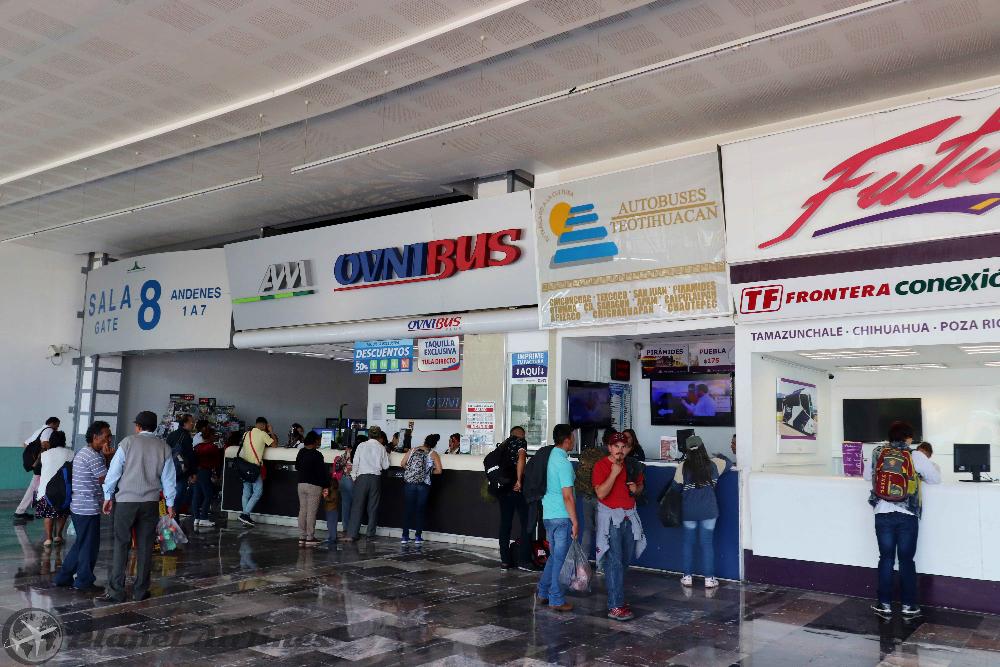
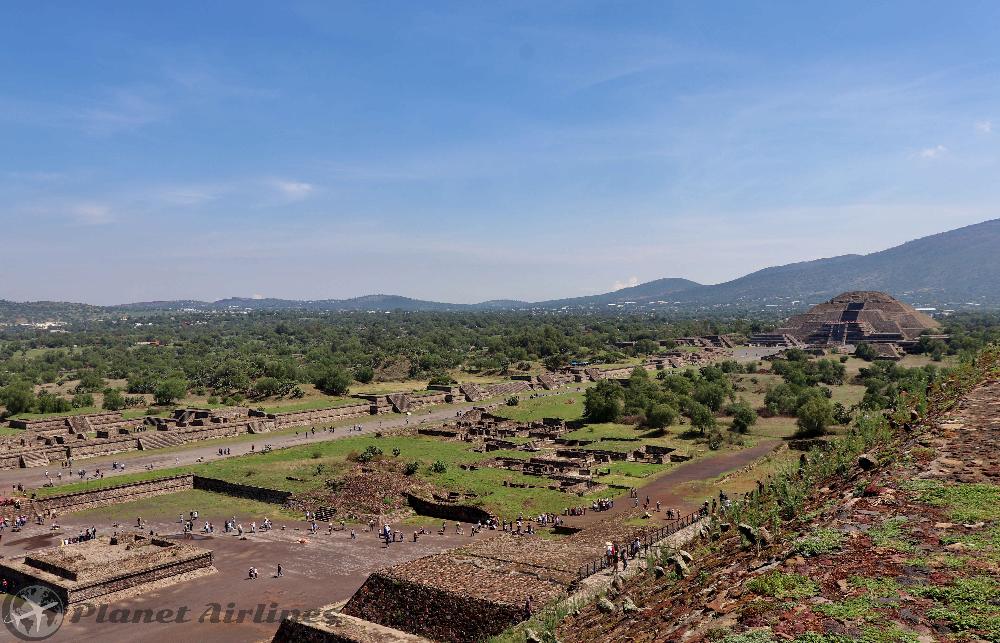
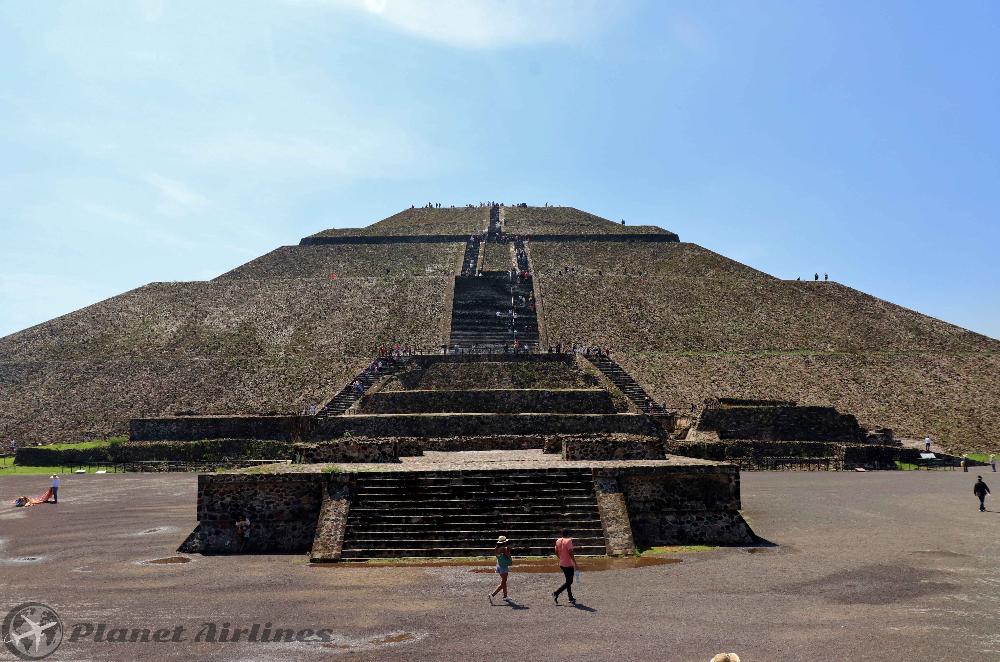
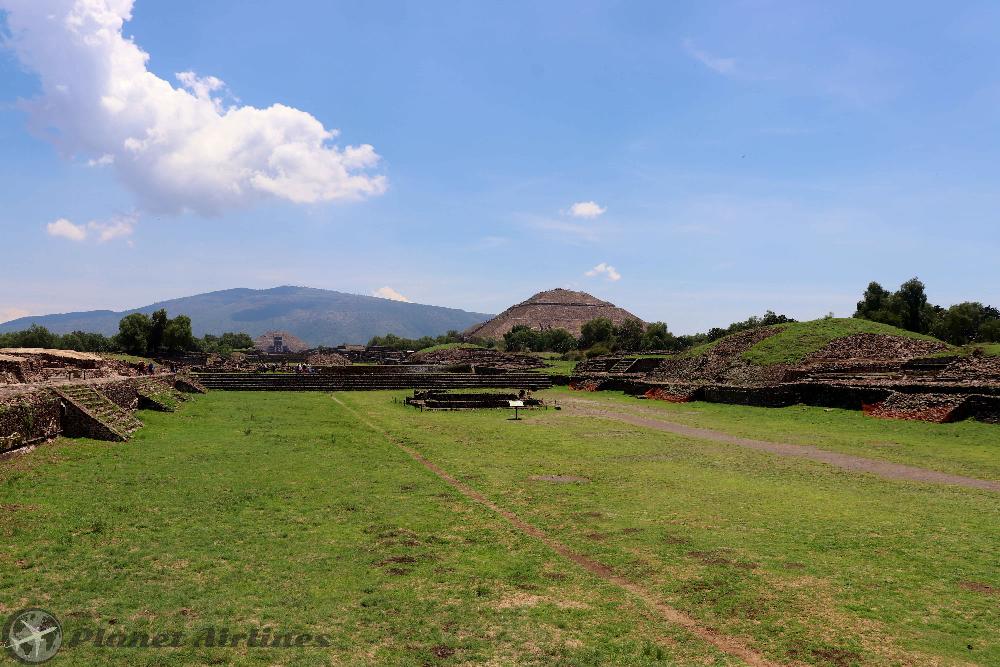
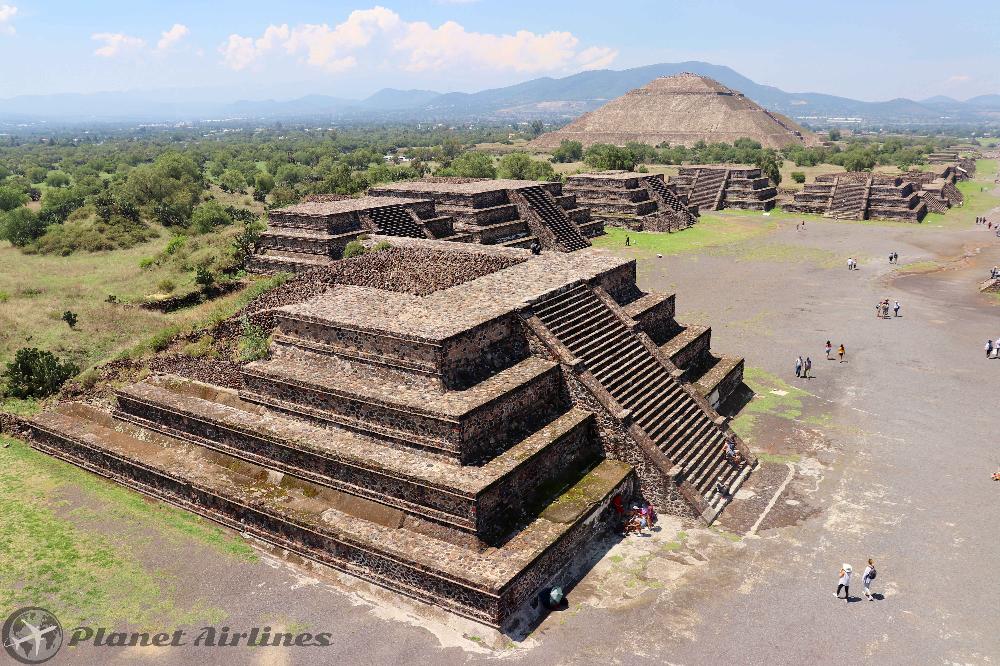



- Guanajuato: is a colonial town, founded around the rich silver deposits discovered by the Spanish in 1558. The city has an unusual layout, crammed into a narrow valley, with houses and streets forced into irregular positions due to the naturally hilly topography. Brightly painted houses perch on slopes reached by narrow cobbled alleyways, hidden plazas, steep stairways and underground tunnels. The most narrow, and most visited, alley is the Callejón del Beso (Alley of the Kiss) where the balconies of the leaning houses on either side almost touch each other, a feature in the local romantic legend about furtive lovers exchanging kisses. Every weekend the famous strolling musicians, or callejoneadas, in traditional dress, lead processions through the narrow winding alleyways, strumming, singing and telling stories to the crowds that follow.
To get there, you can travel by bus, taking Primera Bus company from the North Terminal Bus station in Mexico City. The trip takes 4 hours and prices are 610 Mxn one way. .
Nightlife options in Mexico City are vast and varied, ranging from piano bars, music lounges and traditional Mexican bars to salsa and jazz clubs or trendy nightclubs. San Angel, Polanco, Condesa, Plaza Garibaldi and La Zona Rosa are popular nightlife areas in the city, and there are many late night venues that are open till the early hours. There is a weekend entertainment guide in The News newspaper, available at local newsagents, which can be useful.
The most popular nightlife areas in Mexico City are Condesa district, as well as Polanco. Here you can find anything from English and Irish pubs, to sophisticated clubs with great jazz music and authentic Mariachi venues scattered everywhere in between. Around the capital there are several Pulquerias; they are traditional Mexican bars, which unfortunately are dying down, but they offer true mexican hospitality, drinks like Pulque and a nice atmosphere.
For some traditional and local folklore, head to Plaza Garibaldi, also known as the Mariachi Square. Every night the city’s mariachi bands head out to this popular square to festive, cheer and sing towards walkers, dinners and tourists passing by. They wear all the traditional outfits, play their trumpets and tune guitars until approached by someone who’ll pay for a song. However, the notoriously seedy Garibaldi area, is not somewhere you want to be alone at night. The area continues to undergo a makeover that includes more security, but it’s still a rough neighbourhood.
🌈For the LGBT community, head to La Zona Rosa, where shows are put on during the weekends with lively and colourful acts. It's also some of the safest areas to hang out, as also frequented by many visitors.
Some of the best nightclubs in Mexico City are all located in the Roma district, while many of the top hotels in Mexico City offer live entertainment at their in-house discos and lobby bars.
❗Attention: It is safest not to walk around alone at night in the city and ONLY official, pre-ordered taxi cabs should be used. Don't walk alone is isolated areas, with little or no people. If someone in a bar or club invites you out alone or insists in taking you somewhere else, immediately refuse. People who can't tend to be too pushy or direct can be fake, and this can be because they are after your money, obtain personal information from you and know where you stay to steal or mug you.
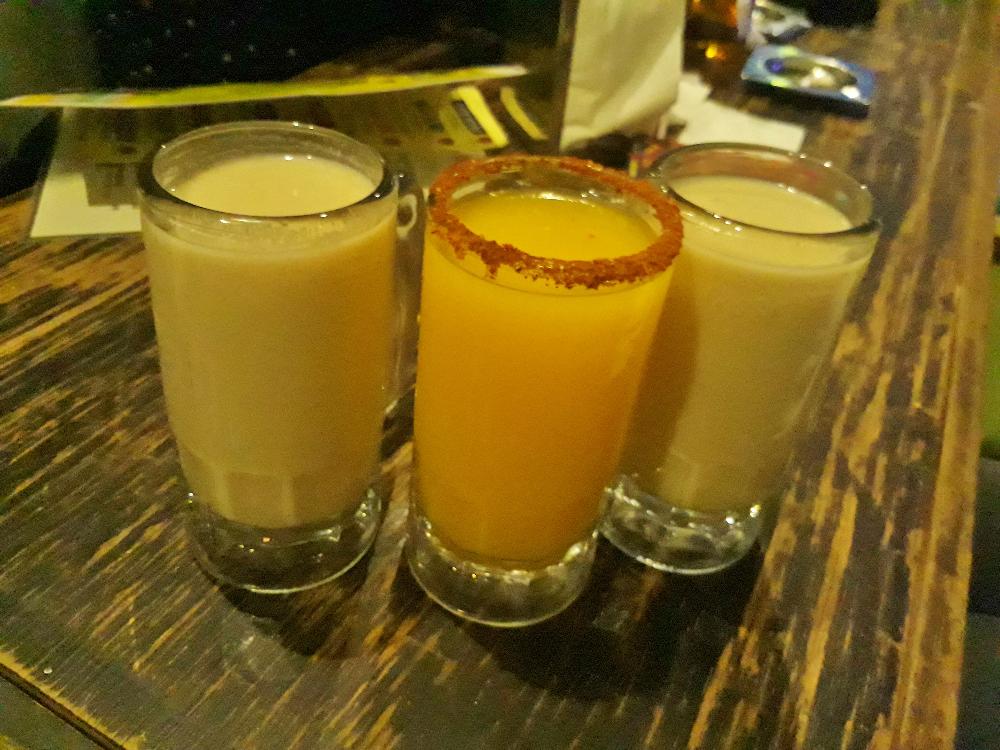
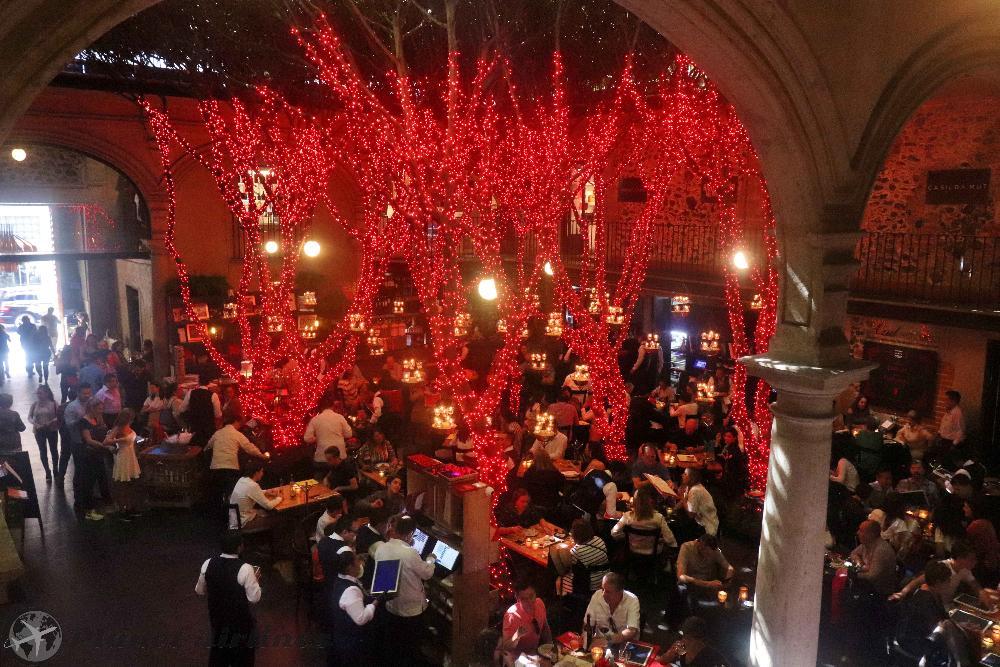
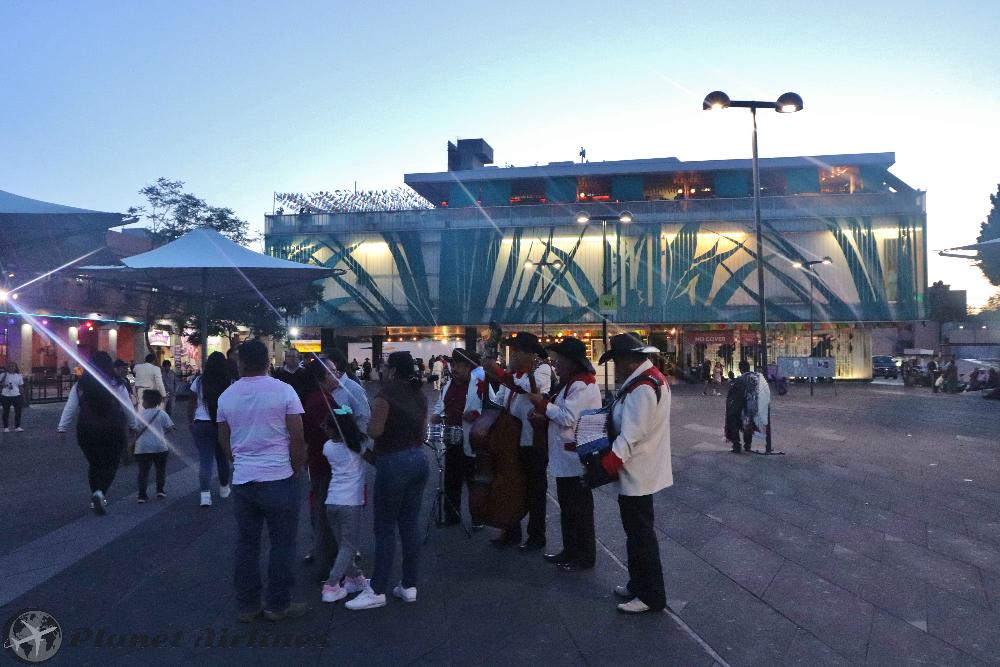
There is never a dull moment when shopping in Mexico City. Visitors can discover everything from authentic local crafts to the major brands and stores found in any big capital. The best Mexican souvenirs tend to be Talavera tiles and ceramics, embroidered garments, sterling silver jewellery and accessories, and hand-woven rugs and blankets.
One of the most popular shopping areas in Mexico City is the Centro Historico, (Old town) home to most of the city's original stores, while La Zona Rosa is also well established and the popular shopping centre Reforma 222 can be found there. Avenida Insurgentes and Avenida Juarez also offer a wealth of shopping opportunities. Most recently, the La Condesa and Polanco areas have developed as strong retail centres. Centro Santa Fe, in the western part of the city, is the largest shopping centre in Latin America, and the upscale Perisur shopping mall to the south is also a good stop.
As for markets, where tourists get into the groove of the place. There is the San Juan Market of Mexican Curiosities and the Mercado la Ciudadela in Centro Historico, as well as the Bazar Sabado (Saturday Bazaar) in San Angel. Fonart outlets throughout the city also sell local crafts such as hand-painted crockery and blown glass.
Most shops in Mexico City are open from 9am to 8pm, with smaller shops taking a break between 2pm and 4pm. The 15 percent VAT charged on goods can be reclaimed at the airport on purchases exceeding MXN 1200.



Thankfully, Mexico city is well prepared to accommodate all budgets for visitors and tourists who want to maximise as much as possible their stay. Although the quality and conditions are not exactly as high as conventional hotels in Europe or USA, all establishments in Mexico City should offer decent beds and clean bathrooms. You need to be prepared as well for a lack of English in many places, specially if you stay in family run hotels or smaller establishments. In the city centre there are all sorts of Hotels, rangin from the classic 4 or 5 star hotel chains to more basic hotels, with prices from $20-25 a night per room for the basic ones.
Naturally there are many more options now a days, like Airbnb for private accomodation, or many hostels which are a good option in the city centre if you are out most of the time and want to spend as little money as possible.
Safe areas to stay in Mexico City are located at:
- Centro Histórico: based around the Zocalo/ Plaza de La Constitución. The historic center is generally safe, but beware of pickpockets attracted by the large number of tourists.
- Zona Rosa/ Reforma: The Zona Rosa is a business and nightlife neighborhood near the centre. The area is home to the Mexican Stock Exchange. Many hotels and restaurants can be found in the area. As well it's a shopping district and centre of the gay community. It can be noisy at night though.
- Condesa & Roma: located south of the centre, are young and relaxed neighborhoods around Parque de Mexico. The area is safe, although as in all the city there are many pickpockets in the subway and public buses.
NOT safe areas to stay in Mexico City are Tepito, one of the most dangerous areas in Mexico City that should be avoided, specially at night. Related problems with crime, theft, drug trafficking and dangerous gangs.
❗Attention: As in all Central and South America, leaving your possessions lying around in the room after you go visiting is not advised. Even in private rooms and good quality Hotels, there are chances of robbery and theft, when people know there are tourists staying. (normally people outside the working hotel, but sometimes from inside). Always pack valuables/electronics/passports in your luggage and lock your luggage securely. Also don't leave windows open when leaving your room and if possible draw the curtains to avoid people looking in. If hotels offer a safe, it's also a good idea to use them, even they require a deposit.
The capital of Mexico can offer a great entertainment of things to see, shop and do, no matter what the weather is like. The size of the city and the transportation does involve some time so it's not a quick affair coming here! The historical city centre is small, and can be seen in a day, specially if joining a tour. But there are many areas worth visiting in the outskirts of the city, making your stay longer. A comfortable stay of 5-6 nights would be great to be able to see everything and explore the areas of Teotihuacán, San Angel and Coyoacán.
✔️Tip: Stay an extra night in Guanajuato to explore further and get to know a typical colonial town.
Mexico City Photo Slide 📷

















.png)